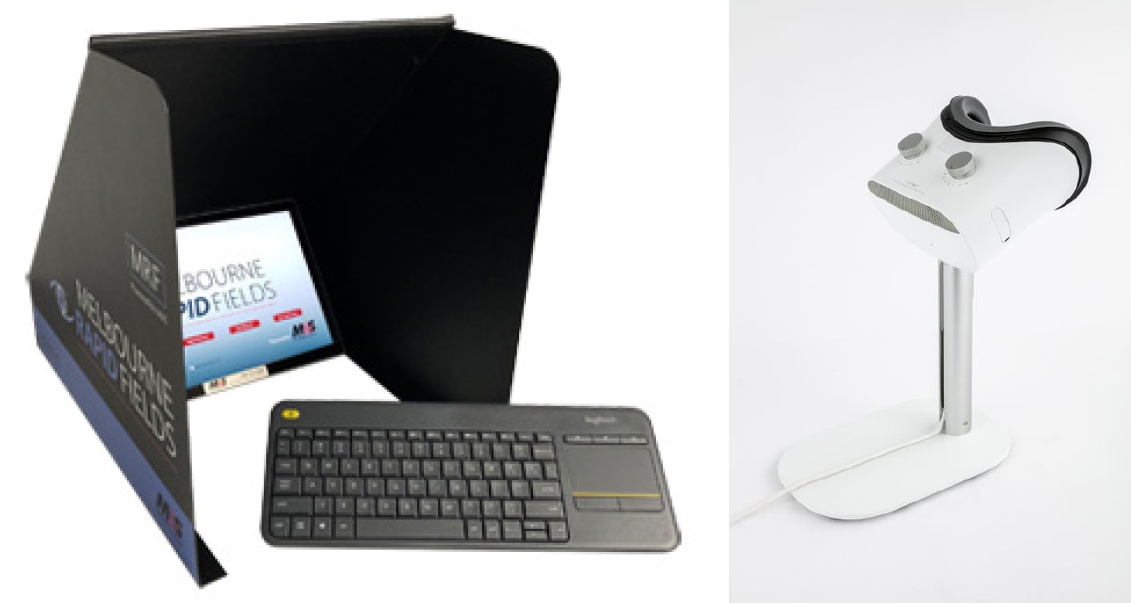 |
| Large VF defects can be detected by these novel devices, whereas smaller defects may be detected differently or missed altogether during VF testing. Photo: M&S Technologies; Crewt Medical. Click image to enlarge. |
At present, the de facto gold-standard modality to evaluate visual field (VF) progression in glaucoma is the Humphrey Field Analyzer (HFA; Carl Zeiss Meditec) SITA Standard test protocol. Numerous portable devices have recently shown potential as more user-friendly alternatives, including tablet-based, tabletop and head-mounted field analyzers.
A new study, published in Ophthalmology Glaucoma, considered the Melbourne Rapid Fields (MRF) tablet-based perimeter (M&S Technologies) and a tabletop unit called the Imo Vifa (Crewt Medical), which is available in some countries outside the US. While these perimeters may provide cost-effective, accessible and more frequent VF home monitoring, their performance has not been thoroughly studied at a point-to-point level. This study determined that, while global VF indices of mean deviation and pattern standard deviation did not significantly vary between HFA and the two novel devices, specific point sensitivity value differences were significant and at times large.
The study, conducted by researchers from Massachusetts Eye and Ear in Boston, included 79 participants (133 eyes) with a mean age of 61 years (range 26 to 79). In this cohort, 59% of the participants were female, and the HFA mean deviation was -2.7dB.
The global indices of mean deviation and pattern standard deviation did not significantly vary between HFA and the two novel devices, except that the tablet VF reported a 0.6dB higher pattern standard deviation compared with HFA. However, tablet and tabletop device sensitivities significantly differed from those of the HFA at 36 and 39 locations, respectively, out of 52 locations. Relative to HFA, the tablet overestimated light sensitivity in the nasal field while underestimating the temporal field. The Imo Vifa device generally underestimated light sensitivity, but its results were more similar to the HFA results compared with the tablet.
One potential explanation the researchers proposed was related to how “the tablet procedure increases stimulus size with greater eccentricities from fixation.”
“This has a couple of advantages: the sensitivity, on average, is essentially equivalent for all VF locations for a normal eye (i.e., the hill of vision becomes a plateau of vision), and the dynamic range of all VF locations is essentially the same,” the team wrote in their paper.
In order to identify progression of VF loss, the researchers believe that test-retest reproducibility is likely the most important factor to consider when evaluating these devices.
“The consistent use within participants may overcome the difficulties for detection and improve the ability to detect progressive changes over time,” they concluded. “Longitudinal studies of patients with a range of glaucoma severity are needed to help determine what role these newer perimeters can play in clinical care.”
Kang J,De Arrigunaga S, Freeman SE, et al. Comparison of perimetric outcomes from a tablet perimeter, smart visual function analyzer and Humphrey Field Analyzer. Ophthalmol Glaucoma. March 12, 2023. [Epub ahead of print]. |


